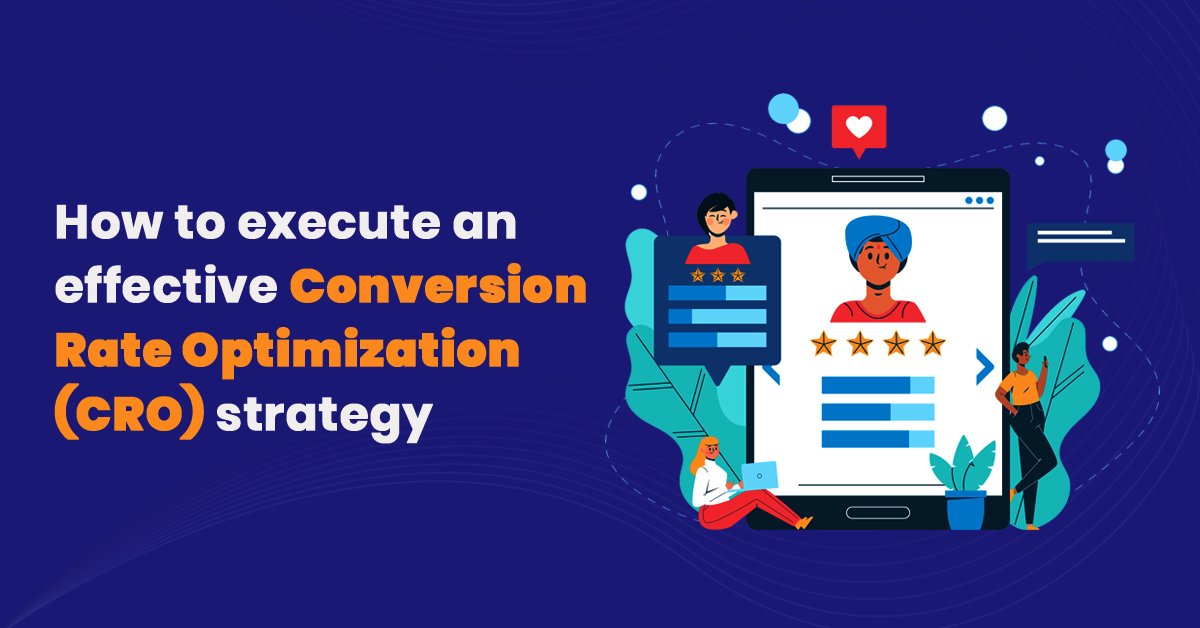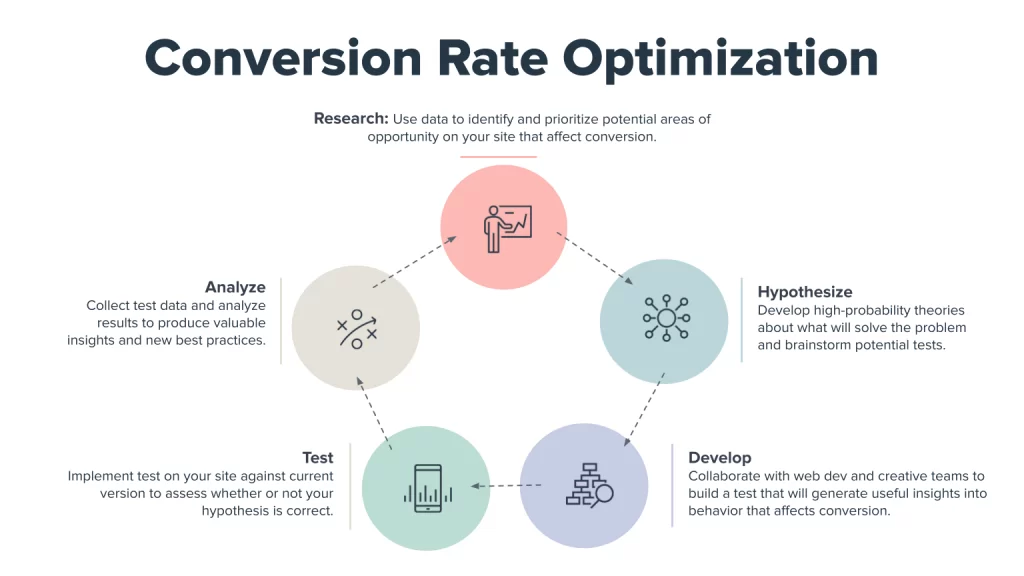
Creating a high-converting website involves implementing various strategies and best practices for Conversion Rate Optimization (CRO). Here are the essential elements to consider:
1. Clear and Compelling Value Proposition: Clearly communicate the unique value your product or service offers to visitors. Use concise and persuasive language to highlight benefits and address customer pain points.
2. Engaging and Responsive Design: Create a visually appealing website with a clean and intuitive layout. Ensure your website is optimized for mobile devices, as a significant portion of web traffic comes from mobile users.
3. Simple Navigation: Make it easy for visitors to find what they’re looking for by organizing your website’s navigation in a logical and intuitive manner. Use clear and descriptive labels for menu items and include a search function if applicable.
4. Attention-Grabbing Headlines and Copy: Craft compelling headlines and persuasive copy that captures visitors’ attention and encourages them to take action. Use concise and benefit-driven language, and break up text into easily scannable sections.
5. Strong Calls to Action (CTAs): Place clear and prominent CTAs throughout your website, guiding visitors to the desired action, whether it’s making a purchase, signing up for a newsletter, or contacting you. Use action-oriented language and contrasting colors to make CTAs stand out.
6. Trust Signals: Build trust with your audience by incorporating trust signals such as customer testimonials, reviews, case studies, security badges, partner logos, and industry certifications. These elements help establish credibility and alleviate concerns.
7. High-Quality Visuals: Use high-resolution images, videos, and graphics that are relevant to your brand and product. Visual content should support your message and enhance the overall user experience.
8. Social Proof: Highlight positive customer experiences and social engagement with your brand. Display testimonials, reviews, ratings, and social media share counters to demonstrate that others trust and value your offerings.
9. Performance Optimization: Ensure your website loads quickly to prevent visitor frustration. Optimize images, minify code, leverage caching techniques, and choose a reliable hosting provider to improve website speed.
10. A/B Testing: Continuously test different versions of your website elements, such as headlines, CTAs, and layouts, to identify what resonates best with your audience. Use A/B testing tools to measure and optimize conversion rates.
11. Clear Contact Information: Make it easy for visitors to contact you by prominently displaying your contact information, including a phone number, email address, and physical address if applicable. A live chat feature can also improve customer engagement.
12. Easy Checkout Process: If you have an e-commerce website, streamline the checkout process to minimize friction and increase conversions. Use a progress indicator, guest checkout option, and offer multiple payment methods to accommodate different preferences.
13. Effective Landing Pages: Ensure your landing pages align with the ad or promotional material that leads visitors to them. Keep the messaging consistent, remove distractions, and make the desired action clear and compelling.
14. Analytics and Tracking: Implement web analytics tools such as Google Analytics to gain insights into visitor behavior, traffic sources, and conversion rates. Use this data to identify areas for improvement and make data-driven decisions.
15. Continuous Optimization: CRO is an ongoing process. Regularly review website performance, user feedback, and industry trends to identify areas for optimization. Continuously test and refine your website elements to maximize conversions.
Remember that the success of your website depends on understanding your target audience and tailoring your strategies to their needs and preferences. Regularly monitoring and optimizing your website based on data-driven insights will help you achieve a high conversion rate and improve overall performance.
